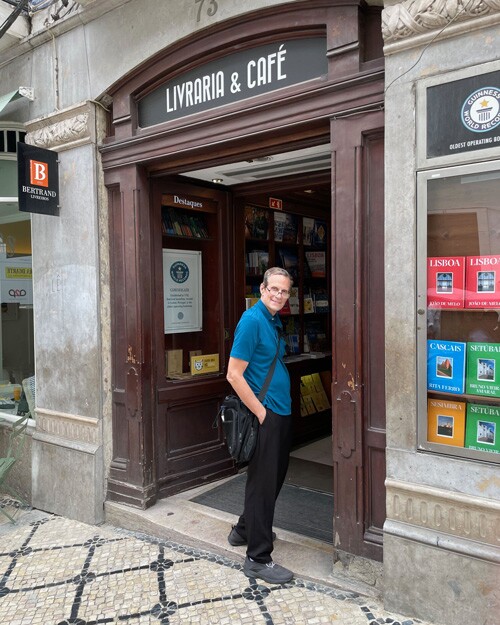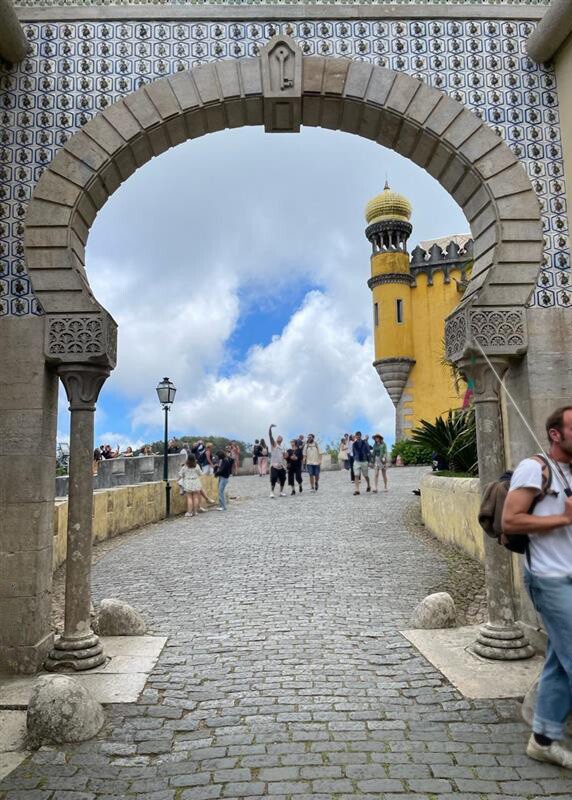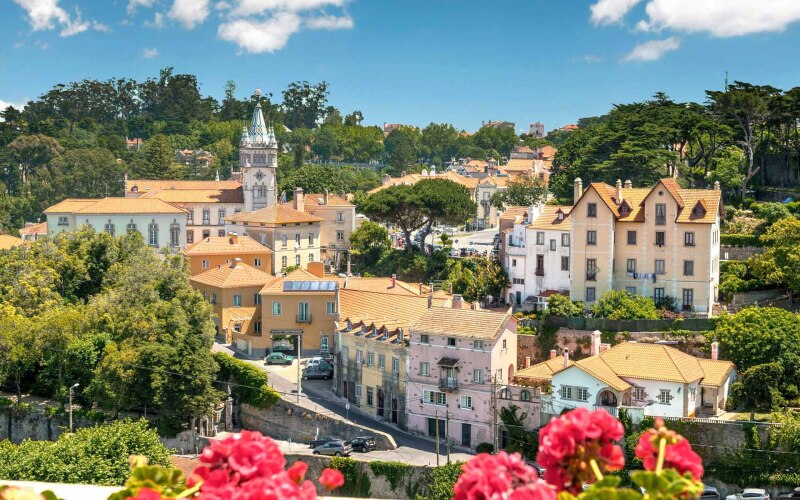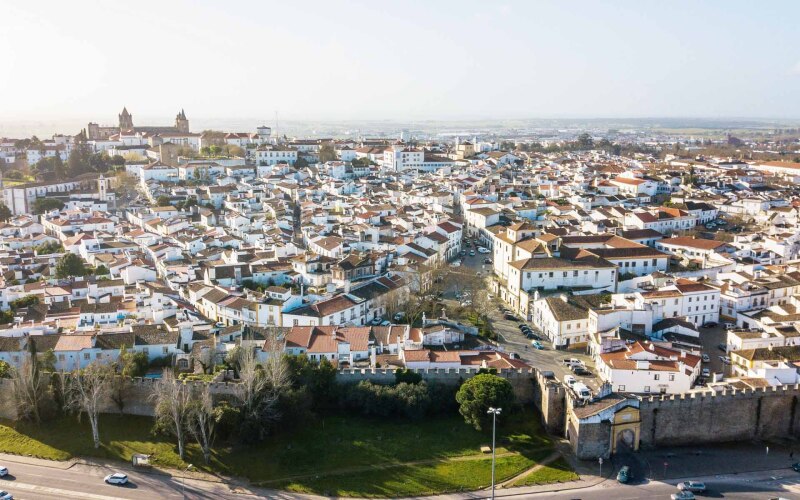If you’re going to Portugal and want to know what to do in Lisbon, you’re in the right place! With its rich history, stunning architecture, and delectable cuisine, Lisbon is a city that captivates the hearts of all who wander its cobbled streets.
Lisbon is one of the oldest cities in western Europe; it existed before Paris, London, and even Rome. Today, the city is a seamless blend of the old and the new, merging modern conveniences with historic landmarks. Truly, Lisbon has a rich history for you to explore—and if you have Portuguese heritage, that history might include your own ancestors.
As you enjoy Lisbon’s incredible architecture, delicious pastéis de nata, and iconic yellow trams, consider also exploring the story of your own family. Research your ancestors before you go—and then, while you’re there, try finding your ancestor’s old homestead or grave. Doing so will enrich your travel experience, giving you a deeper appreciation both for Lisbon and for your own family.
Quick Links
- When Should You Visit Lisbon?
- What to Do in Lisbon
- Tips for Traveling in Lisbon
- Genealogy Resources in Lisbon
- Finding Your Ancestors Buried in Lisbon
- Daytrips around Lisbon
- Parting Thoughts
When Should You Visit Lisbon?
According to locals, the best time to visit Lisbon is in late spring or early fall. The weather is still pleasant, and there’s plenty to do—but you’ll avoid the highest-traffic season of summer, when crowds of tourists are at their peak.
Beyond that, be sure to check out any local events or festivals. If you want to see Carnaval, it might be worth traveling in February or March. In September or October, Lisbon holds the Santa Casa Alfama Festival (link in Portuguese), a celebration of the Portuguese music style, Fado music. Of course, it’s always fun to explore a new area around Christmas. If you visit during the winter holidays you’ll be treated to dazzling Christmas decorations and delicacies such as King’s cake and roasted chestnuts.
What to Do in Lisbon
Lisbon is full of scenic and historic experiences you can try—by yourself or with a group!

Visit the Ajuda National Palace
The Ajuda National Palace housed royalty from the mid-1800s until 1910. Today, it’s a wonderfully preserved window to the past. Inside you’ll find displays presenting how the palace would have appeared in its heyday, as well as a remarkable art collection with pieces that date back to the 15th century.
Visit Estufia Fria, the Accidental Greenhouse
In the heart of Lisbon, you’ll find a one-of-a-kind, thriving garden—Estufia Fria, or the Cold Greenhouse. Once an abandoned basalt quarry, Estufia Fria took on new life when tropical plants left behind during World War I thrived and overtook the space. Today, it’s a beautiful area to explore and take a break from the busy city.
Take Lisbon’s Tram 28
If Lisbon’s uneven cobblestones and steep hills become a bit much to take on foot, hop on Lisbon’s bright yellow Tram 28. These adorable cable cars look like they’ve been pulled straight from the 1930s and will take you on a scenic journey through Lisbon’s most popular tourist areas. Follow the whole route, if you can. It’ll be worth your time!

Stop at the World’s Oldest Bookstore
Bibliophiles will certainly want to make a stop at Livraria Bertrand, a bookstore that holds the world record for the oldest bookstore in the world. It’s no boast, either—Livraria Bertrand was originally founded in 1732. While most books are in Portuguese, Livraria Bertrand has sections of books in Spanish, French, and English throughout its vaulted rooms.
Look for a Panoramic View
Lisbon is one of several cities known as "The City of Seven Hills," and it certainly lives up to its title. Making the trip to the tops of the hills will grant you amazing views of the city and coastline. So many areas have been set up for this express purpose that there’s even a name for it—miradouros, or viewpoints. In these areas you’ll often find restaurants or cafés where you can relax, enjoy traditional pastéis de nata (seriously, make sure you give these flaky custard pastries a try), and take in the landscape.
Explore the Lisbon Cathedral
The spectacular Lisbon Cathedral, or the Church of Santa Maria Maior, is over 800 years old, making it the oldest church in the city. Inside, you’ll find beautiful architecture, artistic stucco ceilings, and incredible stained-glass windows among the cathedral’s 9 chapels.
Tips for Traveling in Lisbon
As you explore Lisbon, it’s important to know a bit about the local culture. Every country in the world has its own quirks, and understanding them before you arrive can help you have a smooth, enjoyable experience as you travel. Here are 6 things you should know before you arrive in Lisbon:

- Bring good walking shoes. Lisbon is an incredibly walkable city, and its streets are gorgeous, thanks in part to calçada Portuguesa, or Portuguese pavement. These beautiful murals adorn roads, sidewalks, and plazas. Unfortunately, the cobblestones used to create the mosaic patterns can also make some walkways uneven in fair conditions and slippery when it rains. Wearing sturdy shoes with a good tread will protect your feet from injury and let you enjoy everything Lisbon has to offer!
- Consider buying a lisboa card. A Lisboa card—available for 24, 48, or 72 hours—offers free unlimited travel on public transportation as well as entrance to over 50 musuems, monuments, and visitor attractions. Restaurants may even offer discounts with the cards.
- Have cash on hand. While most larger shops and venues will accept credit cards, it’s not uncommon for smaller businesses to be cash-only. You can withdraw directly from your bank account at an international ATM, but being prepared in advance by getting some Euros from your home bank will save you time, stress, and ATM fees.
- Turn down the sides at restaurants—or be ready to pay extra. When eating out in Portugal, don’t be surprised when your waiter brings out appetizers—usually bread, cheese, or olives—that you didn’t ask for. This is standard practice, but the additional food isn’t free and will be added to your bill if you eat it. If you don’t want it, simply send it back untouched.
- Understand the tipping culture. Lisbon’s tipping culture is a bit more complicated than just a "yes" or "no." It’s optional, but rounding up the bill or adding an extra euro or 2 for good service is considered polite. At higher-class venues, however, tipping 10% is expected. The gratuity may be automatically added to your bill, however, so double-check to ensure you don’t pay twice for service!
- Know some Portuguese basics. If you stick to the most popular tourist attractions in Lisbon, you’ll probably be able to get by with English. But if you want to go off the beaten path—or if you just want to make a good impression—it doesn’t hurt to learn a few basic European Portuguese phrases. No one is expecting perfection, but locals will appreciate your efforts.
Here are a few basic Portuguese phrases that might come in handy:
- “Good morning!”—“Bom dia!”
- “Good afternoon!”—“Boa tarde!”
- “Please”—“Por favor”
- “Thank you!”—“Obrigado!” if you’re male and “Obrigada!” if you’re female
- “Excuse me”—“Com licença”
- “Yes/no”—“Sim/não”
- “Where is the ___?”—“Onde está ___?”
- “How much is this?”—“Quanto custa?”
Genealogy Resources in Lisbon
While a great many Portuguese family records are available through online archives, including FamilySearch’s own record collections, there are still many that are unfortunately not yet available online. If you’re looking for information on your Portuguese ancestors, contacting one of Lisbon’s genealogical societies may give you the resources you need. Here are a few genealogy resources for you to choose from:
If you’re confident in your own record-searching ability, consider searching through one of Lisbon’s libraries or archives.
For more resources, consider searching the Portuguese Archives Network (link in Portuguese), a country-wide coalition meant to make Portuguese records more accessible. Check out the Portuguese Archives Portal (link in Portuguese) as well.
Want to research your ancestors, but don’t know where to start? Don’t worry—FamilySearch has resources for genealogists of all levels, including this article meant for beginners.
Finding Your Ancestors Buried in Lisbon

A wonderful way to remember and honor your ancestors as you visit Lisbon is to stop at local memorials or cemeteries. This is especially true if you know the location of your ancestors' graves; that way, you can visit them directly.
FamilySearch has 2 cemetery-searching tools to help you locate your ancestors’ final resting place. One will show you a list of cemeteries connected directly to the ancestors in your FamilySearch Tree; the other allows you to see the locations of cemeteries around the world, regardless of whether the people interred there are in your tree. Be sure to try both!
Cemeteries to Visit in Lisbon
Many cemeteries are also museums and will offer tours, books, or other information about the past. Here are some to consider as you explore Lisbon:
Daytrips around Lisbon
As much as there is to do within Lisbon, the surrounding countryside is just as beautiful and practically begging to be explored. Each new area of Portugal you see will heighten your understanding of the country and give you a deeper appreciation for its culture. If you’re looking for an escape from the bustling city, try one of these locales. The following towns are each less than 2 hours away from Lisbon and easy to get to by bus, train, or car!
Sintra

A mere 30 km outside of Lisbon is Sintra, a coastal resort town that was a royal summer retreat. Be sure to take a day to travel there yourself. Once you see its picturesque coasts and lush forests, it’ll be easy to understand why. If you like castles, be sure to visit the colorful National Palace of Pena (Palácio Nacional da Pena) and the contrasting Moorish Castle, 2 beautiful and distinct monuments to the past.
Óbidos

For every city and palace boasting fairy-tale charm, few can claim to have medieval castle walls still protecting them. With its well-preserved medieval architecture, Óbidos is a must-stop for fans of medieval history. Walk the streets and take note of the town’s whitewashed cottages; some are centuries old. Explore Óbidos castle, and, if you can, schedule your visit in July so that you can take part in the city’s Medieval Market.
Sesimbra

Sesimbra is a charming fishing town that offers a view of a slower pace of life. As you explore, consider taking a boat tour of the harbor, enjoying Sesimbra’s breathtaking beaches, or exploring the nearby Arrábida Natural Park. Just be sure to try some of the local seafood; it’s likely to be some of the best you’ll ever taste.
Évora

Like many other areas of Portugal, Évora is a city steeped in history. However, thanks to its preserved Roman structures, Évora feels distinctly ancient when compared to surrounding areas. Preserved Roman sites include a Roman temple and Roman bath, as well as an entire museum of excavated artifacts. You also won’t want to miss the hauntingly beautiful Chapel of Bones, a 16th-century chapel decorated with the remains of 5,000 individuals.
Parting Thoughts
Enjoy your journey through Lisbon! As you travel through the city’s historic cobbled streets, we hope you feel a deeper connection to those who came before you—be it your ancestors or simply those who helped shape the city that Lisbon is today. Safe travels!
ADDITIONAL SOURCES:




